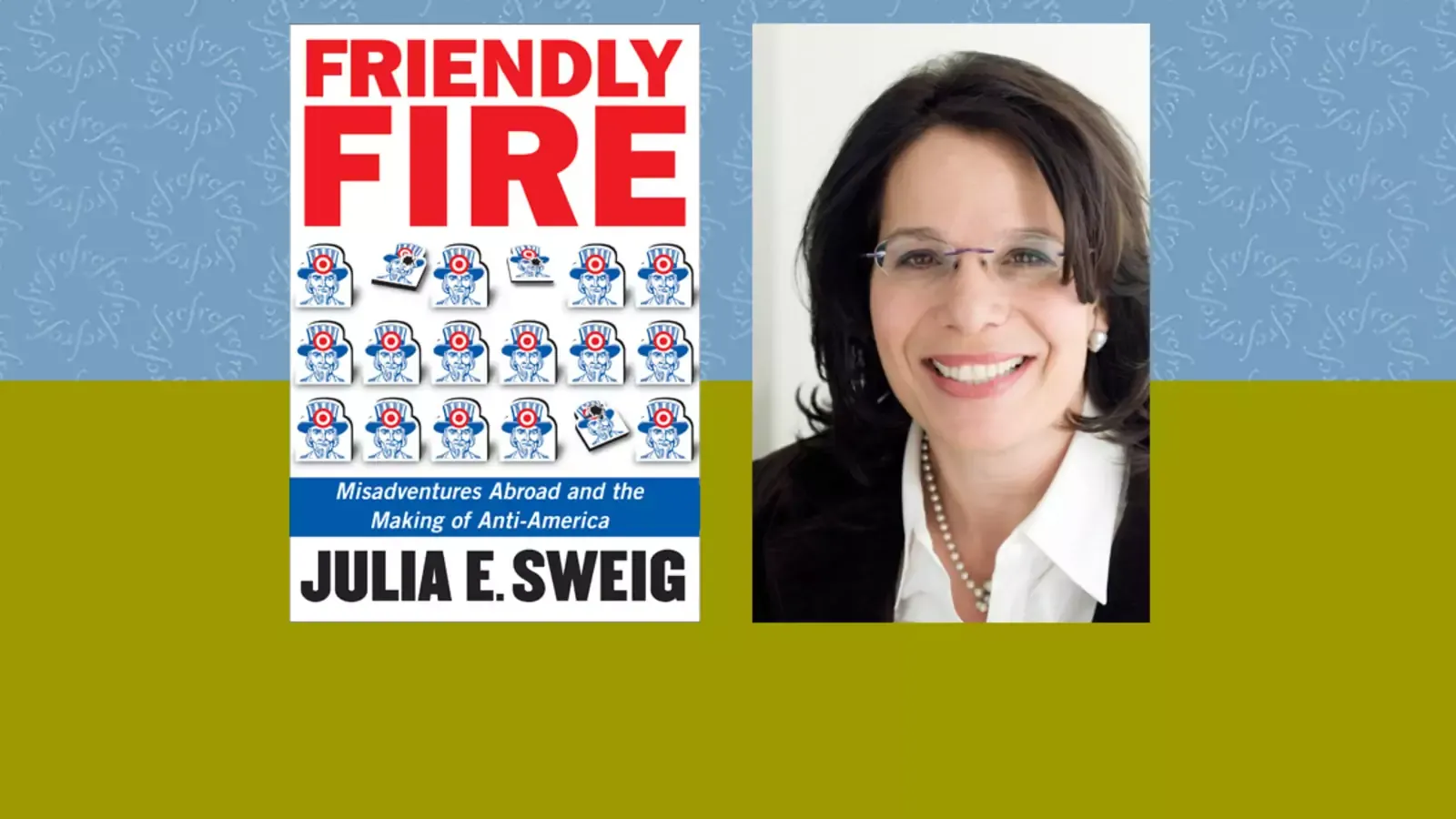Friendly Fire

Introduction
In this book, CFR Senior Fellow Julia E. Sweig offers a detailed analysis of the interaction between the United States and the world community—and a prescriptive framework to contain the anti-American backlash for the future. Teaching notes by the author.
Summary
How could one president and one war so profoundly mobilize global opinion against the United States? Friendly Fire wrestles with how it has been possible in just five years for the United States to have so dramatically scuttled its international credibility and image, especially among America's traditional friends and allies. Yes, Iraq, false intelligence, torture, unilateralism, and even the personality of President George W. Bush had the effect of stripping back the Band-Aid that had covered long-accumulated and latent wounds and resentments of power.
But what Sweig describes as the rise of "Anti-America" today is a problem that runs deeper than just one presidency. What are the historical dynamics that help explain today's anti-U.S. backlash? Is it "us" or is it "them"? How will today's anti-American environment affect the United States' ability to work with the international community to address the global issues of the day? Should there be limits to how American power is used? What can the United States do to deal with the rise of "Anti-America"? Sweig examines the origins of "Anti-America" over the last half century, and argues that the sources of anti-Americanism around the world today go far beyond George W. Bush's foreign policy. And she offers policy prescriptions to help prevent "Anti-America" from becoming a debilitating feature of international politics.
This book is useful for courses on U.S. policy toward Latin America, U.S. foreign policy, and anti-Americanism.
Discussion Questions
U.S. Policy toward Latin America
One of the main arguments of this book is that Latin America was a testing ground for U.S. foreign policy of unilateral intervention, and what the author calls "preemptive Americanism."
Discussion Questions
- The Monroe Doctrine and Roosevelt Corollary were put into practice in Latin America by the United States during the 19th and 20th century. To what degree does this history remain a feature of Latin America's relations with the United States today?
- Why was the Cuban Revolution of 1959 a turning point in U.S. foreign policy toward Latin America?
- How did the tools of U.S. policy during the Cold War shape Latin America's perception of the United States today?
- What has been Latin America's reaction to U.S. power in the region and internationally, and how has this affected the way the United States is viewed today?
- What parallels can be drawn between post-9/11 Bush foreign policy and 20thcentury U.S. foreign policy toward Latin America?
U.S. Foreign Policy
Discussion Questions
- What other episodes of U.S. foreign policy during the Cold War, outside of Latin America, caused tension with America's European allies?
- What differences does the author point out between U.S. postwar policy in Europe and Cold War policy in the Third World? What is their significance?
- What role has the Iraq war played in international perceptions of the United States (outside of the Middle East)?
- Sweig argues that the United States often confuses power with legitimacy. What does she mean? Do you agree?
- Why are multilateral institutions important to small powers and is it possible for the United States to satisfy its security interests while working within the confines of such institutions?
- How would you recommend the United States deal with new international dilemmas, such as Iran's nuclear program?
Anti-Americanism
This book argues that the sources of anti-Americanism around the world today go far beyond George W. Bush's foreign policy.
Discussion Questions
Explain the main structural and historic factors that Sweig argues contribute to anti-Americanism today. Is this argument convincing? Which factors do you believe are more significant and why?
- How has the author's concept of the "80/20 divide" played out in a recent world event?
- Why is globalization a factor explaining anti-Americanism?
- Sweig argues that globalization and democracy sometimes work at odds in the developing world. Do you agree or disagree? What would you recommend the United States and other governments in the developed and developing world do to avoid the negative consequences of this clash?
- How have domestic policy and domestic politics within the United States played a role in how the international community perceives America?
- Friendly Fire also argues that "anti-Americanism" is not new. In what ways is "anti-Americanism" today different than "anti-Americanism" during the 20th century?
What to do about anti-Americanism?
- How much should the United States care what the world thinks of it?
- This book argues that anti-Americanism matters because it impedes the United States' and international community's ability to solve global problems. Do you agree? Why?
- Do you think the United States can realistically do anything to temper the levels of today's anti-Americanism?
- The author makes several suggestions for the United States in order to affect perceptions of America. Which of these methods or actions do you think could be most effective? What else would you suggest?
- How much of a role should public diplomacy have in a strategy by the United States to?